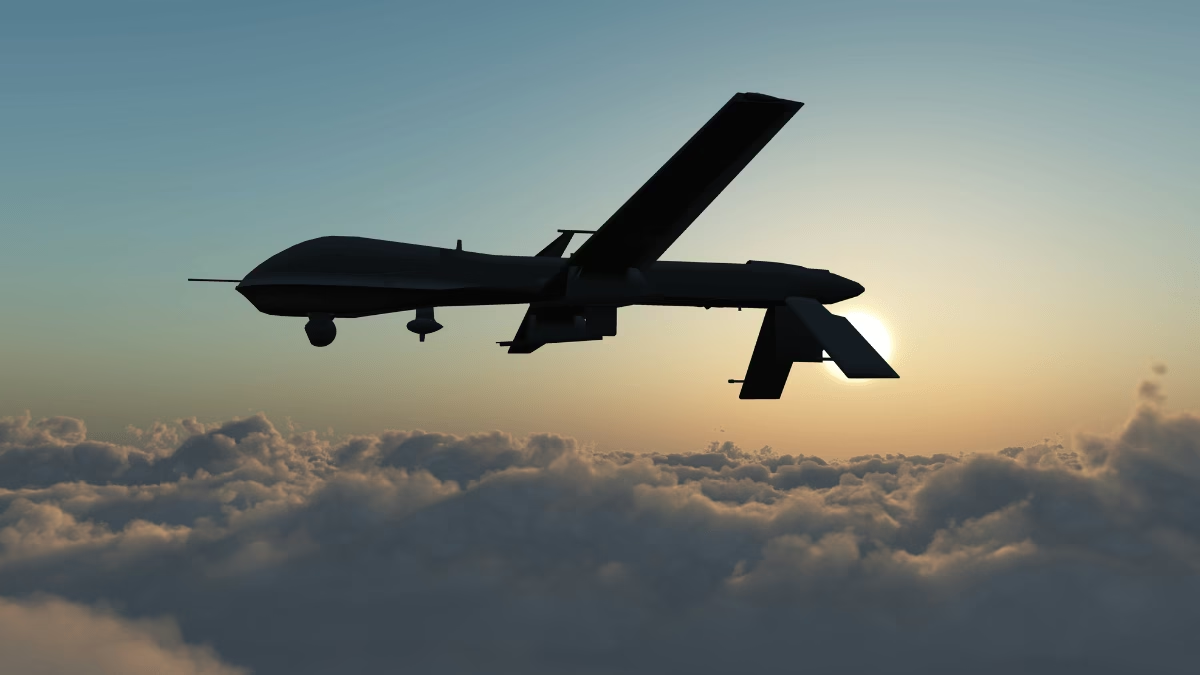China has achieved a major milestone in aviation technology with the development and unveiling of the world’s first jet-powered vertical take-off and landing (VTOL) drone. This revolutionary unmanned aerial vehicle combines the remarkable speed and power of jet propulsion with the unmatched flexibility of VTOL capabilities, opening new frontiers in both military and civilian aviation.
What Makes the World’s First Jet-Powered VTOL Drone Unique?
Traditional VTOL drones operate using propellers or tiltrotor systems, providing the ability to take off and land vertically, but these systems often come with trade-offs in speed, range, and operational efficiency. Jet-powered aircraft, on the other hand, rely on long runways or launch assistance, restricting their deployment environments.
China’s new drone breaks these limitations by integrating a jet engine designed specifically to allow vertical lift-off and landing while delivering high-speed, supersonic horizontal flight. This technical marvel gives the drone the capability to launch from ship decks, rooftops, or remote, unprepared terrain—removing the dependency on runways and extending operational flexibility dramatically.
The innovation was developed by the aerospace team at Beihang University, who spent years solving challenging aerodynamic and control problems to ensure smooth transitions between vertical flight and jet-powered cruising. The result is a drone that not only outpaces current propeller-driven VTOL systems but also rivals many manned jets in speed and performance.
ALSO READ : 10-Year-Old Chess Prodigy Bodhana Sivanandan Stuns World by Defeating Grandmaster
Price Range of the World’s First Jet-Powered VTOL Drone
Given its sophisticated design, jet propulsion system, and advanced avionics, this military-grade drone carries a premium price tag. The estimated cost ranges between $80,000 and $300,000 per unit, depending on mission-specific customization such as sensors, payloads, and communication systems. This price reflects its position among the highest-cost UAVs available, calibrated for defense and specialized civilian applications.
Advantages of the World’s First Jet-Powered VTOL Drone
- Runway Independence: The drone can perform vertical take-offs and landings from diverse, constrained environments, including naval ship decks and urban rooftops.
- Unmatched Speed: Jet propulsion enables supersonic or near-supersonic speeds, surpassing conventional VTOL drones significantly.
- Extended Operational Range: The drone’s speed and fuel efficiency over long distances make it suitable for reconnaissance, rapid strike, and supply missions.
- Swarm Capability: Multiple drones can be deployed in coordinated groups for overwhelming surveillance, offensive, or defensive tasks.
- Versatility Across Sectors: Its capabilities extend beyond military uses, applicable in emergency response, environmental monitoring, and industrial surveys.
Practical Uses of the World’s First Jet-Powered VTOL Drone
Military Applications
- Naval Reconnaissance and Surveillance: The drone extends the sensory reach of naval fleets by operating from nearly any class of ship, not limited to aircraft carriers.
- Electronic Warfare: It acts as mobile, flexible communication and jamming platforms in contested environments.
- Precision Strike Missions: Enables rapid deployment of high-speed drones for offensive operations while minimizing risk to manned aircraft.
- Fleet Defense: Provides a fast, distributed aerial shield through coordinated swarm tactics.
Civilian Applications
- Search and Rescue: Drones can access areas cut off by natural disasters or rough terrain quickly.
- Emergency Supply Delivery: Rapid transport of medical supplies, food, and other materials to areas without reliable road access.
- Agricultural Monitoring: Cover large agricultural landscapes efficiently for health and yield analysis.
- Infrastructure Inspection: Survey bridges, pipelines, power lines, and large-scale projects from the air with precision.
- Environmental Mapping: Useful in tracking climate change effects, wildlife monitoring, and land surveys.
Disadvantages and Operational Challenges
- High Acquisition and Maintenance Costs: Complex systems, jet engines, and advanced avionics require significant investment and ongoing upkeep.
- Payload Limitations: The VTOL mechanism adds weight, limiting the drone’s cargo capacity relative to traditional fixed-wing jet UAVs.
- Energy Demand: Vertical take-offs and landings consume significant energy, reducing flight duration compared to conventional drones.
- Noise Levels: Jet engines are noisier than electric motors, potentially limiting use in stealth or noise-sensitive scenarios.
- Operational Complexity: Requires highly skilled pilots or reliable autonomous flight controls.
- Regulatory Barriers: High-speed UAVs face strict regulations that could complicate deployment, especially in civilian airspace.
Conclusion
China’s world’s first jet-powered VTOL drone marks a significant evolution in unmanned aviation. By combining vertical take-off and landing with jet-level performance, it ushers in a new era of rapid deployment and operational versatility. Transforming naval warfare, emergency response, and industrial inspection, this drone is set to influence global aviation trends and defense strategies.
With this pioneering technology, China positions itself at the cutting edge of UAV innovation, setting new challenges for international competitors and providing a glimpse into the future of unmanned flight.

